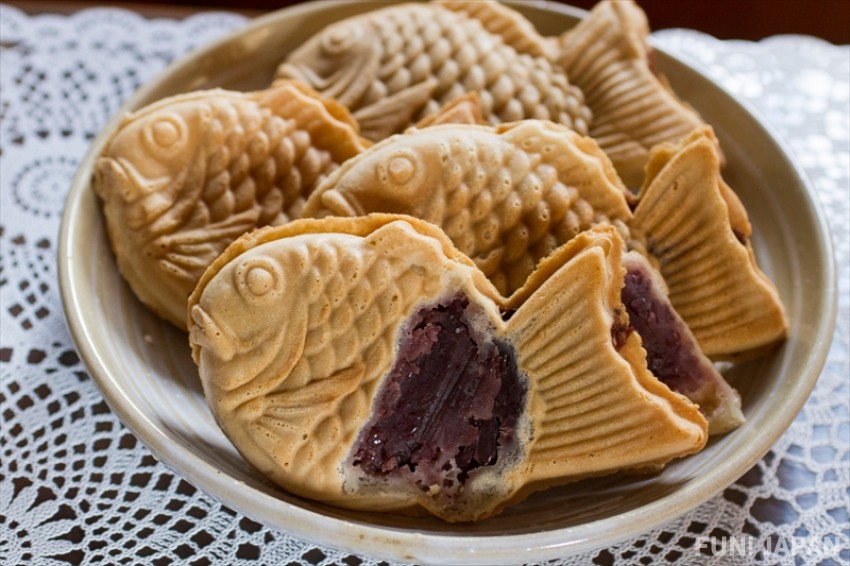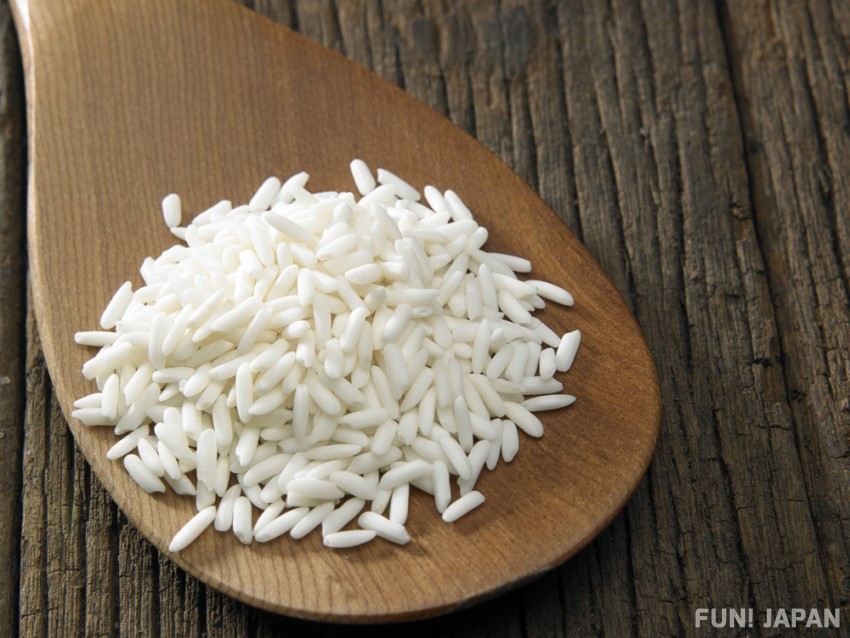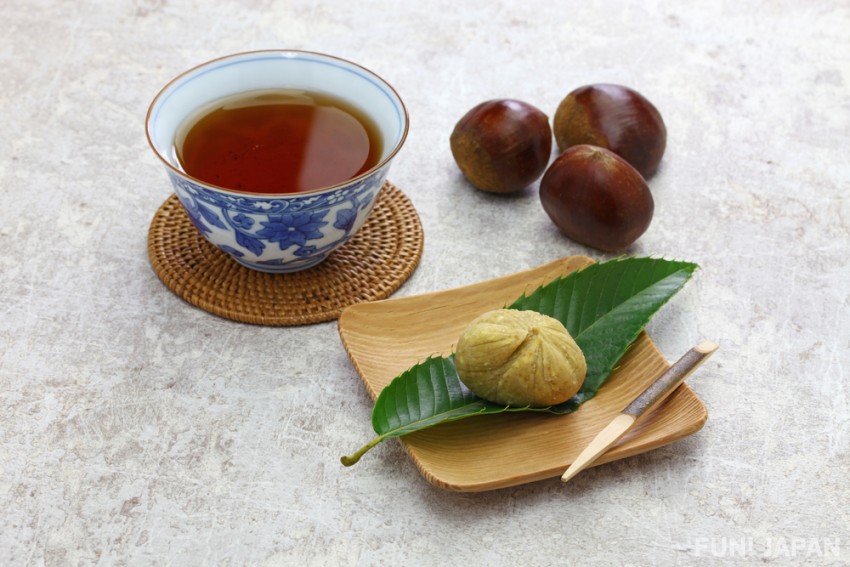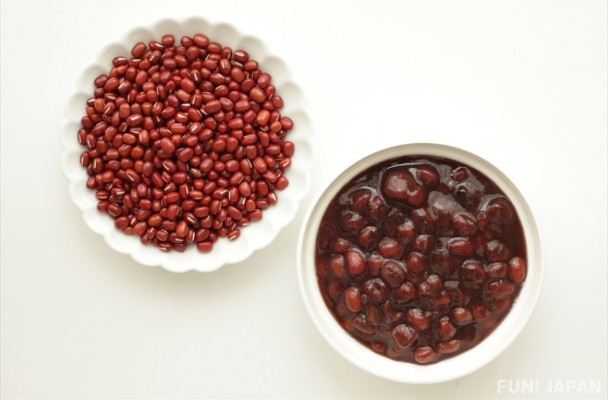
“Wagashi” are traditional Japanese sweets. One particular ingredient used in wagashi is “anko,” a sweet paste made from beans. Other popular ingredients used in wagashi are grains like mochi rice, jelly-like kanten, and even seasonal fruits. Let’s take a closer look at these various wagashi ingredients.
Anko: A Sweet Filling Made from Beans

Generally, azuki, a type of red bean, is used to make anko. They are boiled together with sugar and made into a paste. This type of anko is often used as filling in manju (饅頭) and taiyaki (鯛焼き), which are shaped like fish. It can also be used in the center of mochi.
Azuki from Hyogo prefecture’s Tamba (丹波) and Hokkaido is the most widely known. About 90% of all azuki produced is grown in Hokkaido. And over half of that azuki is used to make anko. There is also another type of anko that is white, which is made from regular beans.
Grain

The main ingredient in wagashi is usually rice. One variety of rice called mochigome is used because of its sticky texture. Other grains such as soba, panicum miliaceum, foxtail millet, and flour are used as well.
Kanten

Kanten (寒天) is made from a sea grass called amakusa (天草) that is boiled to create a broth, frozen, and then dried and used to make sweets with a jelly-like texture. Because it is full of fiber and a low-calorie food, it’s popular with many Japanese women nowadays.
Seasonal Fruit

The persimmons and chestnuts that grow abundantly throughout Japan in autumn have been some of the most beloved fruits in the country since ancient times, which also makes them a must-have ingredient to use in wagashi as well. Other fruits that pair well with wagashi due to their sweetness and aroma are peaches, pears, apricots, and plums. Walnuts, Japanese horse-chestnuts, and other such nuts are also used in wagashi as well.
We hope you enjoyed this look into various wagashi ingredients and learned something new along the way!

Comments